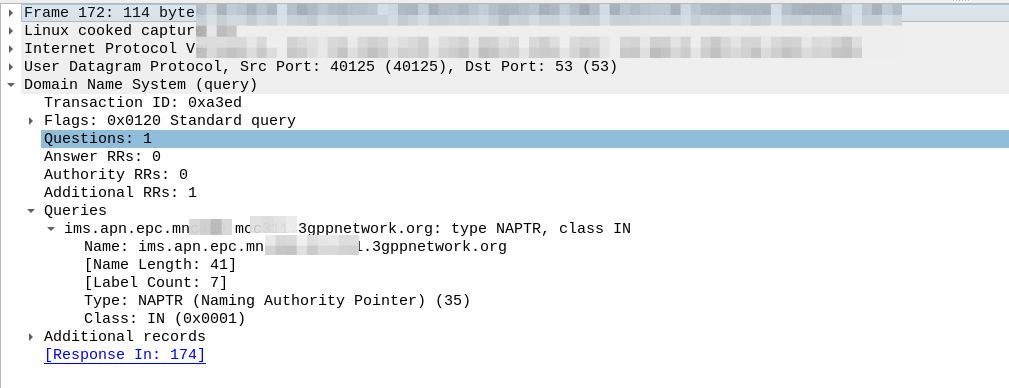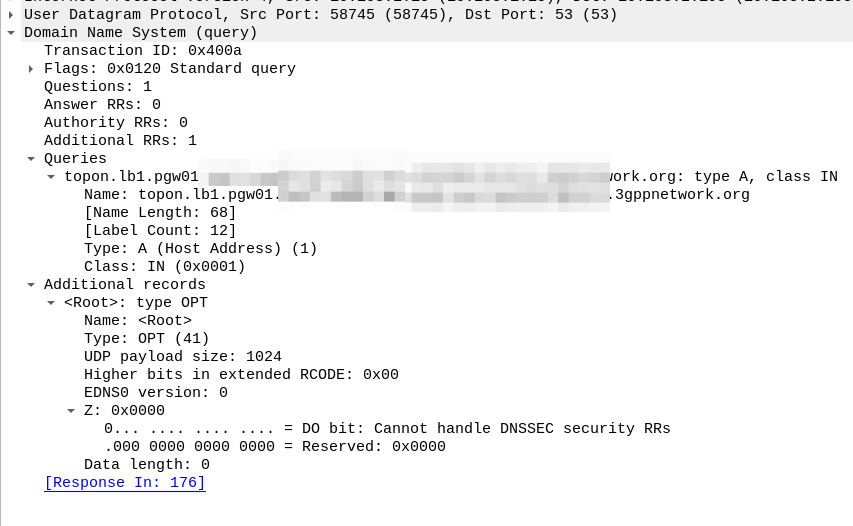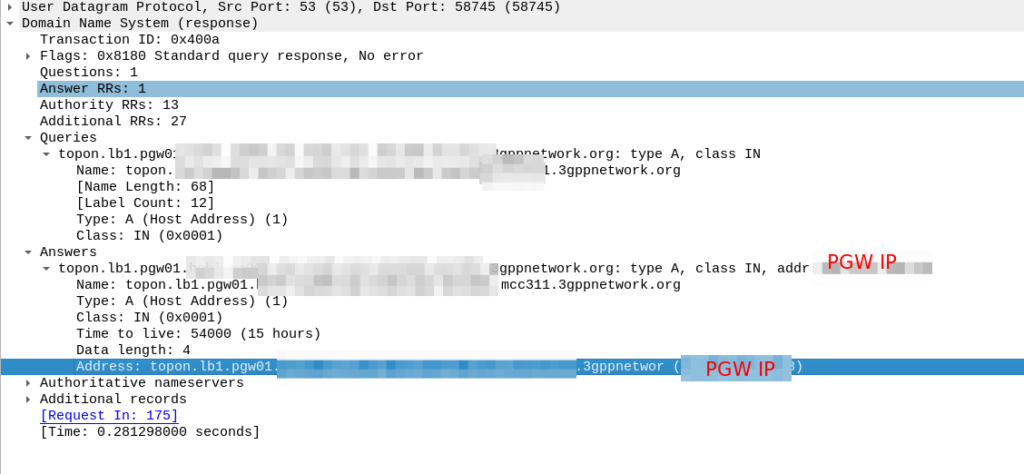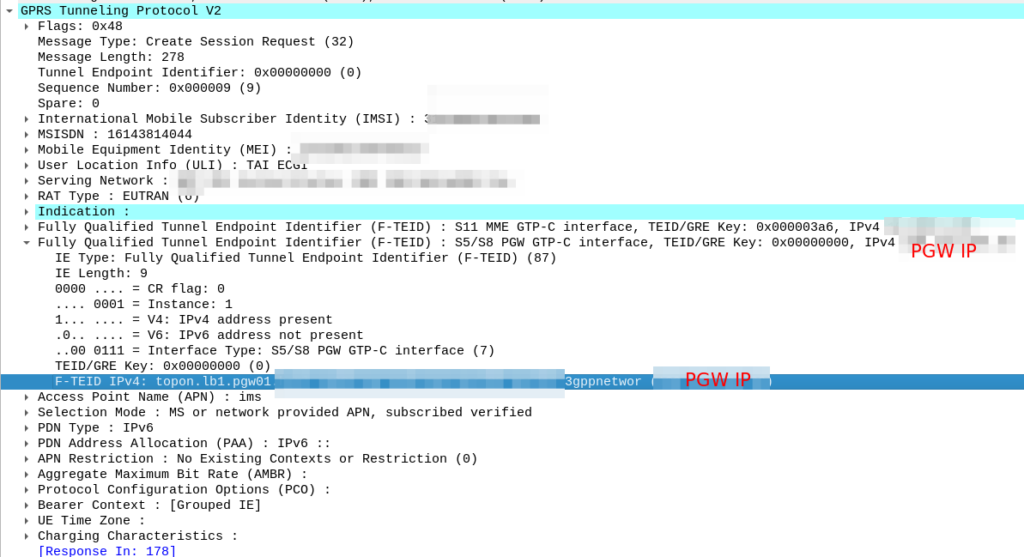S8 Home Routing is a really simple concept, the traffic goes from the SGW in the visited PLMN to the PGW in the home PLMN, so the PCRF, OCS/OFCS, IMS, IP Addresses, etc, etc, are all in the home network, and this avoids huge amounts of complexity.
But in order for this to work, the visited network MME needs to find the PGW of the home network, and with over 700 roaming networks in commercial use, each one with potentially hundreds of unique APNs each routing to a different PGW, this is a tricky proposition.
If you’ve configured your PGW peers statically on your MME, that’s fine, but it doesn’t scale very well – And if you add an MVNO who wants their own PGW for serving their APN, well you’ll be adding some complexity there to, so what to do?
Well, the answer is DNS.
By taking the APN to be served, the home PLMN and the interface type desired, with some funky DNS queries, our MME can determine which PGW should be selected for a request.
Let’s take a look, for a UE from MNC XXX MCC YYY roaming into our network, trying to access the “IMS” APN.
Our MME knows the network code of the roaming subscriber from the IMSI is MNC XXX, MCC YYY, and that the UE is requesting the IMS APN.
So our MME crafts a DNS request for the NAPTR query for ims.apn.epc.mncXXX.mccYYY.3gppnetwork.org:

Because the domain is epc.mncXXX.mccYYY.3gppnetwork.org it’s routed to the authoritative DNS server in the home network, which sends back the response:

We’ve got a few peers to pick from, so we need to filter this list of Answers to only those that are relevant to us.
First we filter by the Service tag, whihc for each listed peer shows what services that peer supports.
But since we’re looking for S8, we need to find a peer who’s “Service” tag string contains:
x-3gpp-pgw:x-s8-gtp
We’re looking for two bits of info here, the presence of x-3gpp-pgw in the Service to indicate that this peer is a PGW and x-s8-gtp to indicate that this peer supports the S8 interface.
A service string like this:
x-3gpp-pgw:x-s5-gtp
Would be excluded as it only supports S5 not S8 (Even though they are largely the same interface, S8 is used in roaming).
It’s also not uncommon to see both services indicated as supported, in which case that peer could be selected too:
x-3gpp-pgw:x-s5-gtp:x-s8-gtp
(The answers in the screenshot include :x-gp which means the PGWs advertised are also co-located with a GGSN)
So with our answers whittled down to only those that meet our needs, we next use the Order and the Preference to pick our best candidate, this is the same as regular DNS selection logic.
From our candidate, we’ve also got the Regex Replacement, which allows our original DNS request to be re-written, which allows us to point at a single peer.
In our answer, we see the original request ims.apn.epc.mncXXX.mccYYY.3gppnetwork.org is to be re-written to topon.lb1.pgw01.epc.mncXXX.mccYYY.3gppnetwork.org.
This is the FQDN of the PGW we should use.
Now we know the FQND we should use, we just do an A-Record lookup (Or AAAA record lookup if it is IPv6) for that peer we are targeting, to turn that FQDN into an IP address we can use.

And then in comes the response:

So now our MME knows the IP of the PGW, it can craft a Create Session request where the F-TEID for the S8 interface has the PGW IP set on it that we selected.

For more info on this TS 129.303 (Domain Name System Procedures) is the definitive doc, but the GSMA’s IR.88 “LTE and EPC Roaming Guidelines” provides a handy reference.

Hi,
does MME include the PGWs FQDN and IP Adress inside GTPv2 towards SGW? So SGW does not lookup any Records via DNS?
And where are the DNS Servers are located? This is not public internet, right?
Hey Markus!
That’s right – The MME does all the DNS, the SGW just does what it’s told to do with the IPs in the Create Session Request.
The DNS servers aren’t supposed to be on the public internet (Though you’d be surprised how many are), but are connected through an IPX like a roaming hub, who provides DNS relay to their connected peers.